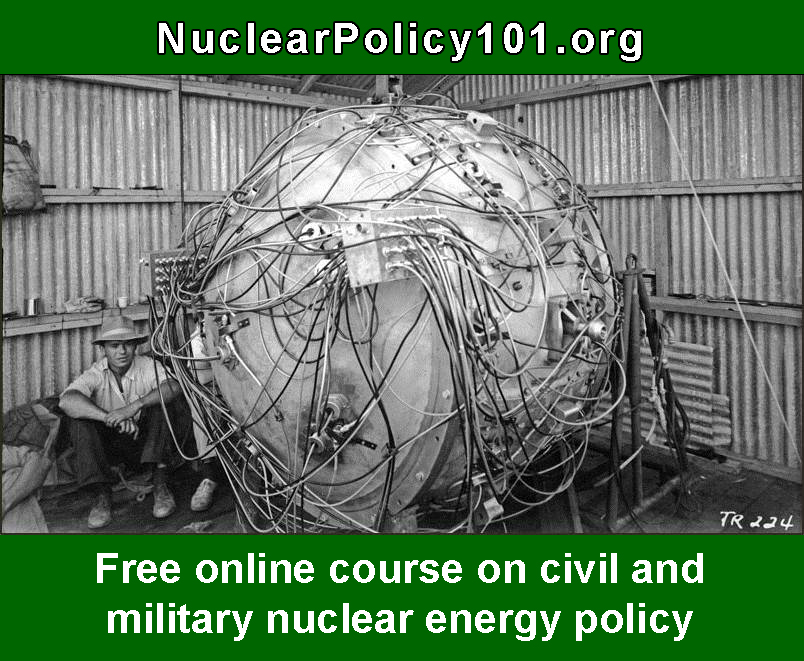This next installment provides a list of Albert Wohlstetter’s writings at the RAND Corporation during the 1950s. Again, as with the list of Wohlstetter’s pre-RAND writings, this list isn’t comprehensive. But it is the best chronological bibliography of Albert’s 1950s RAND writings that you’ll find outside of the register for the Wohlstetters’ private papers.
But first, a little biographical context: Albert Wohlstetter first joined the RAND Corporation as a consultant in February 1951. Prior to that he had been working for several years at a prefabricated housing company in southern California that had tried, but in the end failed, to mass-produce the “Packaged House,” a design by Bauhaus architects Konrad Wachsmann and Walter Gropius.
Roberta [Mary Morgan] Wohlstetter, who had been working off-and-on in RAND’s social science division since 1948, helped to set up a meeting for her husband with Charles “Charlie” Hitch, a Missouri-born Rhodes Scholar who, after working for the Office of Strategic Services during World War Two, had settled in Santa Monica to head RAND’s economics division. Hitch and Wohlstetter immediately clicked, and Hitch hired him to work as a consultant to RAND’s mathematics division. In the mathematics division, Albert worked mainly on problems related to modeling logistics, issues far removed from nuclear strategy. But this would all change a few months later.
As Albert Wohlstetter would recall in an interview several decades later, in May 1951 Hitch asked him whether he would be interested in working on a problem that the recently-formed U.S. Air Force (USAF) had posed to RAND. The problem, posed as a question, was basically this: How should the USAF base the Strategic Air Command (SAC)? At first, Albert thought that this would end up being a run-of-the-mill logistics problem. But after a weekend of thinking through the problem, he began to understand better how the choice of SAC’s method of basing its small force of medium-range manned bombers — which, when armed with atomic gravity bombs, constituted at the time America’s main hedge against “central war” in Europe, that is, a Soviet invasion of Western Europe — had important implications.
And so, Albert Wohlstetter accepted Charlie Hitch’s offer, and with that, entered the world of nuclear-age strategy.
Albert Wohlstetter’s RAND Writings (1951-1959)
- Albert Wohlstetter, H.I. Ansoff, W.W. Baldwin, D.J. Davis, N. Kaplan, P. Kecskemeti, Outline of a Study for the Plans Analysis Section, D-937, (Santa Monica, CA: RAND Corporation, May 10, 1951). HTML version available online at the RAND Corporation’s website.
- Albert Wohlstetter, Initial and Annual Costs and Peacetime Life Expectancies, D-1062 (Santa Monica, CA: RAND Corporation, October 30, 1951). HTML version available online at the RAND Corporation’s website.
- Albert Wohlstetter, Economic and Strategic Considerations in Air Base Location: A Preliminary Review, D-1114 (Santa Monica, CA: RAND Corporation, December 29, 1951). HTML version available online at the RAND Corporation’s website.
- Albert Wohlstetter and Henry S. Rowen, Campaign Time Pattern, Sortie Rate, and Base Location, D-1147 (Santa Monica, CA: RAND Corporation, January 25, 1952). HTML version available online at the RAND Corporation’s website.
- Albert Wohlstetter, A Little Answer and Some Big Questions for the Target Systems Analysis, D(L)-1246 (Santa Monica, CA: RAND Corporation, April 9, 1952). HTML version available online at the RAND Corporation’s website.
- Albert Wohlstetter, Fred S. Hoffman, Robert J. Lutz and Henry S. Rowen, Selection of Strategic Air Bases, special staff report, R-244-S (Santa Monica, CA: RAND Corporation, March 1, 1953). PDF version available online at Albert Wohlstetter Dot Com.
- Albert Wohlstetter and Fred S. Hoffman, Defending a Strategic Force After 1960: With Notes on the Need by Both Sides for Accurate Bomb Delivery, Particularly for the Big Bombs, D-2270 (Santa Monica, CA: RAND Corporation, February 1, 1954). PDF version available online at Albert Wohlstetter Dot Com.
- Albert Wohlstetter, Fred S. Hoffman, Robert J. Lutz and Henry S. Rowen, Selection and the Use of Strategic Air Bases, a report prepared for United States Air Force Project RAND, R-266 (Santa Monica, CA: RAND Corporation, April 1954). PDF version available online at the RAND Corporation’s website.
- Albert Wohlstetter, Fred S. Hoffman and Michael E. Arnsten, Measures to Protect Airbase Bulk Fuel Stocks, RM-1398 (Santa Monica, CA: RAND Corporation, December 21, 1954). HTML version available online at the RAND Corporation’s website.
- Albert Wohlstetter, Fred S. Hoffman and Henry S. Rowen, Protecting U.S. Power to Strike Back in the 1950’s and 1960’s, staff report, R-290 (Santa Monica, CA: RAND Corporation, September 1, 1956). PDF version available online at Albert Wohlstetter Dot Com.
- Albert Wohlstetter, Systems Analysis versus Systems Design, P-1530 (Santa Monica, CA: RAND Corporation, October 29, 1958). HTML version available online at the RAND Corporation’s website.
- Albert Wohlstetter, The Delicate Balance of Terror (unabridged version), P-1472 (Santa Monica, CA: RAND Corporation, November 6, 1958 [revised December 1958]). PDF version available online at Albert Wohlstetter Dot Com. Reprinted in Robert Zarate and Henry Sokolski, eds., Nuclear Heuristics: Selected Writings of Albert and Roberta Wohlstetter (Strategic Studies Institute, 2009).
- Albert Wohlstetter, “The Delicate Balance of Terror” (abridged version), Foreign Affairs, Vol. 37, No. 2 (January 1959), pp. 211-234.
- Albert Wohlstetter and Henry S. Rowen, Objectives of the United States Military Posture, RM-2373 (Santa Monica, CA: RAND Corporation, May 1, 1959). HTML version available online at the RAND Corporation’s website. PDF version available online at Albert Wohlstetter Dot Com.






